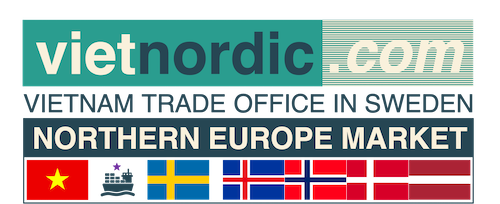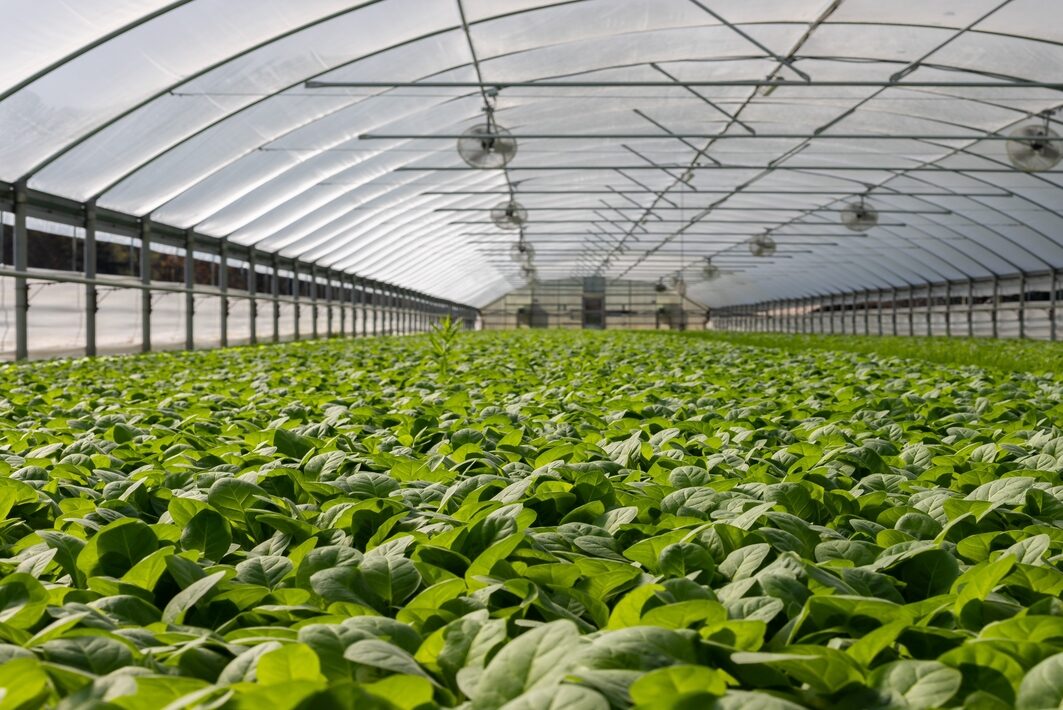Vietnam’s plant-based agriculture is experiencing rapid growth and Vietnam is becoming a key player in global agriculture. Here’s what potential foreign investors should think about when considering entering Vietnam’s agricultural sector.
Vietnam has been selected by the United Nations to host the 4th Global Conference of the One Planet Network’s Sustainable Food Systems Programme in April this year. This will bring together experts from around the world to discuss how best to develop ‘sustainable, resilient, healthy, and inclusive food systems’.
At the same time, the World Economic Forum (WEF) has selected Vietnam as one of the first three countries to pilot the Food Innovation Hub, a flagship initiative of the Food Action Alliance designed to improve sustainability in food production.
As Vietnam becomes more visible on the global agricultural stage, we take a look at sector exports, opportunities for foreign investors, and some of the growth challenges moving forward.
Vietnam agricultural exports
In 2022, Vietnam’s agricultural sector experienced its highest growth in recent years reaching 3.36 percent. Of this figure, farming increased by 2.88 percent, fisheries increased by 4.43 percent, and forestry increased by 6.13 percent. The export turnover of the whole industry was over US$53.22 billion.
Vietnam currently exports a broad range of agricultural products all over the world. Its main exports are walnuts, coffee, and rice – accounting for just over US$5.7 billion worth of agricultural exports in 2021.
Funding development in agriculture in Vietnam
Overseas direct assistance (ODA) has played a key role in Vietnam’s agricultural growth coupled with the support of the Ministry of Agriculture and Rural Development (MARD).
By the end of 2022, MARD had approved four ODA projects or had investment policies with a total loan value of US$840 million. The ministry also coordinated with businesses to prepare 14 new project proposals requiring total capital of US$3.2 billion.
Last year, the agricultural sector also mobilized US$300 million in grant aid and approved 15 projects worth US$25 million for non-governmental organizations. It also attracted a large amount of FDI with 12 new projects and US$68 million in newly registered capital.
But more capital is needed and, with few restrictions on foreign investment in Vietnam’s agricultural sector (see below), foreign producers of agricultural products and their private finance may be necessary in order to facilitate the sector’s continued development.
Drivers of agricultural sector development
Government incentives and support
Decree No.57/2018/ND-CP on the mechanisms required to attract investment into agricultural and rural development forms the backbone of government policy aimed at increasing investment in the agriculture sector.
Decree 57 covers many types of new incentives for agricultural enterprises. These include:
• being exempted from payment of some fees;
• being exempted from payment of land rental and/or water surface in some instances;
• interest rate subsidies on commercial loans; and
• government funding for some facilities. For example, waste treatment, electricity, water infrastructure, as well as workshops and equipment required for some projects.
Furthermore, currently circulating is the Draft Strategy for International Cooperation in Agriculture and Rural Development to 2030.
The strategy is divided into three main groups of tasks and solutions:
• Proactive international integration;
• Strengthen partnerships; and
• Mobilizing external resources (read: FDI).
Free trade agreements
Vietnam is a part of 15 Free Trade Agreements (FTAs). This is opening markets like South Korea where, more than seven years after implementing the VKFTA, Vietnam has become the third largest mango supply market for S. Korea, reaching 1.7 thousand tons. This is equal to US$7.4 million.
As a result of the EVFTA that is now in place, Vietnam has also become the largest source of cashew nuts for the EU. In the first 10 months of 2022, Vietnam exported 98.97 thousand tons of cashews to European markets, worth US$699 million. This represents an increase of 9.8 percent over the same period in 2021.
Agricultural development barriers in Vietnam
Increased competition
Despite the benefits FTAs can present, they may be a double-edged sword.
With the quality standards system for Vietnam’s agricultural products still incomplete, Vietnamese goods can sometimes fail to meet the quality requirements of foreign markets.
Vietnam’s commitment to remove tariffs or reduce import taxes for a number of agricultural products also opens the domestic market to other key agricultural producers. Take the CPTPP, for example, which includes Australia, New Zealand, and Canada – all three huge primary producers.
This can create competitive pressure on the domestic agricultural industry with cheap produce and farmed goods arriving from countries with better farming technology and higher quality standards. Domestic producers therefore may be at a disadvantage if they cannot find financing to compete with bigger international players.
But this is a win for consumers with lower prices and a broader variety of products leading to better diets and a better quality of life. It would be unlikely then that protectionist policies would return to support domestic producers.
In this light, farmers may need to look outside of Vietnam for financing.
Climate change
One of the key challenges the agricultural sector faces is climate change. Vietnam is very vulnerable to the increasing consequences of climate change. This includes: droughts, floods, and saltwater intrusion. Adapting to these changes can be costly and will require modified farming techniques and new technologies, which come at a cost.
Local firms are already forking out millions of dollars for more advanced farming technology. TH Milk, one of Vietnam’s biggest dairy producers, is installing Israel computer technology on a number of farms around Vietnam to increase efficiency.
Similarly, Germany’s Bayer has a crop sciences branch operating in Vietnam developing sustainable, eco-friendly plant protection and hybrid seeds to increase productivity and decrease Vietnamese agricultures environmental footprint.
A lack of skilled labor
The Vietnamese agricultural sector may also face a shortage of high-skilled labor. As more workers move to secondary and tertiary sectors like manufacturing and services (tourism, finance, IT), the labor pool for agricultural workers is shrinking. This is in turn increasing the cost of Vietnam’s agricultural products.
Workers that remain in the sector are also usually older and/or without technical skills beyond traditional farming methods. They also often lack technological literacy, which can make it more difficult for modern farming techniques to be instituted and applied.
But this challenge, may be an opportunity for foreign collaboration and education investment. Institutions and startups from emerging and developed countries that offer advanced and niche agricultural education programs, training, and technology know-how may be tapped for upgrading Vietnam’s sector capability and human capital. This, coupled with Vietnam’s drive to further open and expand its education sector could see positive outcomes for both Vietnam and foreign investors.
Foreign investment in Vietnamese farms
As far as investment goes, plant-based agriculture does not carry any conditions for foreign investors. The establishment and registration of a foreign company wishing to invest in agriculture simply needs to comply with the standard investment, enterprise, and company laws.
That said, the 2013 Land Law, does not permit foreign investors to acquire land to build farms in Vietnam. Therefore, in order to establish a farm in the country, foreign investors can only rent the land. To do this they must establish a foreign invested enterprise, either alone or with a local partner.
Foreign investors and local partners may enter into an investment cooperation agreement in either the form of a joint-stock company or a limited liability company. They can also enter into a Business Cooperation Contract without having to establish a legal entity in Vietnam.
Foreign investors in Vietnam’s agricultural sector
A number of foreign investors are already making headway in Vietnam’s agricultural sector and many of them have been operating in the country for quite some time.
With the aforementioned limits on land ownership for foreign investors, international firms tend to be concentrated in either ancillary services or high-value goods, such as nuts, coffee, or fresh cut flowers.
Three firms that have been relatively successful in the Vietnamese market are Cargill, Olam, and the Louis Dreyfus Company.
Cargill
Since February 1995, American company Cargill has operated in Vietnam through Representative Offices in Hanoi and Ho Chi Minh City. It provides animal nutrition services and products as well as grain processing services. More than 1,500 people are employed by Cargill Vietnam, which has various locations around the country.
Olam
Olam is a global organization headquartered in Singapore. The company employs more than 6,500 employees in Vietnam’s central and southern provinces. Olam Vietnam has quickly established itself as one of the biggest exporters of cashew nuts, pepper, and coffee.
Louis Dreyfus Company
The France-based Louis Dreyfus Company has had a presence in Vietnam since 1998. It currently operates five facilities in Vietnam. These are:
• Lam Dong Robusta Coffee Buying Station,
• Lam Dong Arabica Coffee Mill,
• Daklak Robusta Coffee Buying Station,
• Pleiku Robusta Coffee Mill in Pleiku, and
• Orico Rice Mill in Dong Thap.
Vietnam’s agricultural products moving forward
Agriculture still plays a significant role in the Vietnamese economy, although it faces challenges including: climate change, a shortage of highly-skilled labor, and increased competition.
There are, however, a number of government incentives supporting the agricultural sector, as well as FTAs, that, though a challenge in many ways, are also opening up foreign markets to Vietnamese agricultural products.
With a strong commitment from the government to promote agriculture and the growing involvement of the private sector in this field, the prospects for the agricultural sector in Vietnam are promising.

